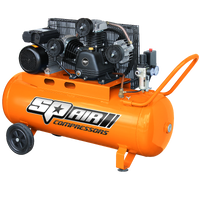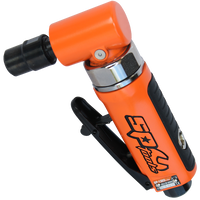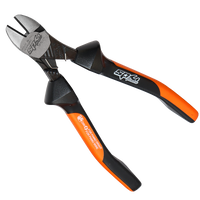Car suspension bushes are the softer materials used to separate the rigid metals that make up most of the suspension components. Springs, strut mounts, stabilizer bars, control arms, and ball joints all rely on bushings to connect them with other components and the frame of the vehicle. The bushings provide much-needed padding for these hard components while also creating the stabilization necessary for reliable handling. There are different types of bushings and each one has its own performance characteristics.
How Suspension Bushes Impact Performance and Handling
Your vehicle's suspension system is responsible for keeping your tires touching the road as you drive. The suspension accomplishes this by moving and flexing with bumps and irregularities you encounter while driving. Springs and shocks or dampeners stabilize your vehicle as you drive, but the bushings are also responsible for how your vehicle handles.
High-quality bushings prevent metal components from grinding and scraping one another. The type of bushings used in your vehicle also determines how your ride feels as you drive. Softer rubber bushings provide a plush and relaxing ride, while stiffer nylon or polyurethane bushings create a responsive performance that isn't as comfortable.
As a vehicle owner, you can make your ride more comfortable by investing in softer bushings, or you can tighten up your steering and reduce body roll by getting stiffer bushings. It's up to you to decide which bushings are used on your vehicle to influence the performance of your ride and the comfort.
Exploring the Different Types of Suspension Bushes
There are many different materials used for bushings today. The brand and material you choose determines how strong the bushings are, as well as how much flex they offer and what sort of ride feel you get with them. Each of the bushing materials listed below has a different purpose, and its own strengths and weaknesses. Get to know all the details about each key bushing material and use that information to help you choose which bushings are right for your vehicle application.
Rubber Bushings
Out of all the different suspension bushes, rubber bushings are still the most popular overall. Rubbering bushings are soft and supportive and they don't squeak during use. Rubbering bushings offer reliable protection for different hard surfaces and they have been used for decades to pad suspension systems. Rubbering bushings wear out more quickly than harder alternatives though, and they don't offer the stiffness required for some of the highest-performance vehicles.
Polyurethane Bushings
Polyurethane bushings are the second most popular type of bush in car suspension material used today. Polyurethane is highly durable and lasts far longer than rubber. Polyurethane is less prone to cracking and is optimal for high-performance driving use cases.
Polyurethane is prone to squeaking during use and requires regular oiling to keep it silent. It can be made stiffer, offering more ride feel and more reliable steering at high speeds. Race cars and other high-performance vehicles make heavy use of polyurethane bushings.
Polygraphite Bushings
These modern bushings provide most of the benefits of polyurethane bushings offering some extra benefits as well. If you equip your vehicle with polygraphite bushings you'll enjoy a stiff and reliable suspension, with less squeaking than what you get with polyurethane. Polygraphite is self-lubricating and very quiet during operation.
This bushing is also resistant to dry rot and can provide a longer lifespan than polyurethane and is much more durable than rubber. Polygraphite bushings are resistant to grease, weather, and oil and can be counted on to hold up in the most demanding conditions. Polygraphite bushings are more costly than polyurethane though, which is why they aren't used all the time.
Nylon Bushings
Nylon Bushings are strong and stiff and provide support to key suspension components that need high levels of strength. These bushings are self-lubricating and they resist most weathering and wear. Nylon is far too stiff for many suspension needs and cannot serve the same purpose as rubber or polyurethane. Nylon bushings are often recommended for situations where swiveling and spinning are common. Nylon is a long-lasting material and can deliver reliable support to a suspension system when used properly.
Metal Bushings
Bushings are often used to provide space between metal components and to serve as a shield to prevent scraping and corrosion. There are some instances where bushings aren't separating metal components from touching. In some of these use cases, you can use metal bushings for superior strength and longevity. Shifter bushings are a perfect example of this. In a manual transmission, there are bushings required to keep the stick shift tight and responsive. As the bushings wear out the shifting stops feeling clean.
It gets loose and feels sloppy. While polyurethane bushings are typically used for this application, metal bushings can be used instead. Metal bushings are far more durable and can be used without doing damage to the surrounding materials. Consider upgrading to metal bushings in the few areas that you can on your vehicle, because they will last longer and prove more reliable than most other bushing materials are.
Regular Maintenance and Replacement are Essential
Bushings that only work when they're in good condition. If they're allowed to wear too much the hard metal components surrounding them will begin to scrape and take damage. Worn bushings should be replaced before they allow serious damage to occur to other components of your vehicle. It's also important to regularly grease certain bushings, such as polyurethane and nylon to keep it performing noiselessly. Greasing your bushings regularly will help prevent dry rot and excess wear as well.
Conclusion
Bushings provide the padding your vehicle needs to drive effectively and safely. Well-made bushings are made to last for decades and certain bushings can serve as serious upgrades for your vehicle as well. Regularly check your bushings to see if any are in need of replacement, grease them, and consider upgrading them to help your car perform as well as it can.






































































































